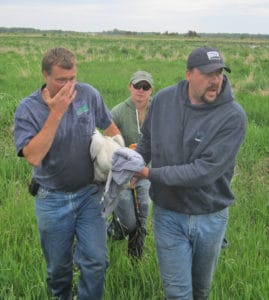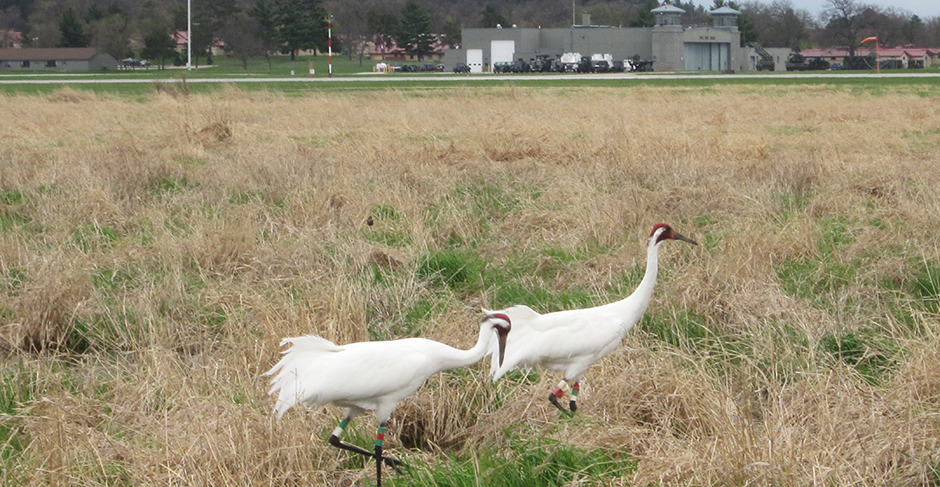Share this article
A whooping crane win in Wisconsin
Balancing human health and safety with recovery of threatened and endangered species is a rewarding aspect of Wildlife Services operations across the country. In May, Wildlife Services in Wisconsin addressed a whooping crane (Grus americana) hazard near a military airfield in Juneau County. The county is also home to a national wildlife refuge where the eastern U.S. population of whooping cranes nest.

Wildlife Services and the U.S. Fish and Wildlife Service worked in 2014 to capture a whooping crane nesting dangerously close to the airfield. ©USDA Wildlife Services
Whooping cranes, a federally listed endangered species, are listed as a non-essential experimental population in Wisconsin. Wildlife Services-Wisconsin provides wildlife hazard assistance to Volk Field Combat Readiness Training Center, but between the weekly onsite management visits, a whooping crane pair had built a nest and laid eggs adjacent to the runway.
Wildlife Services worked cooperatively with the U.S. Fish and Wildlife Service, Wisconsin Department of Natural Resources, International Crane Foundation and Volk Field to remove three eggs from the nest. The eggs were taken to the International Crane Foundation in nearby Baraboo and placed in another whooping crane nest. Since the egg removal, the crane pair moved approximately two miles north of the base, outside the risk area for airfield traffic.
This isn’t the first collaboration at the site. In May 2014 a pair of whooping cranes had habituated to the airbase surroundings, at risk to themselves and aviation. Wildlife Services captured the male crane. The collaborating partners had decided the male crane, which had unsuccessfully paired with different females over several years, was not contributing to expanding the breeding population. After capture, it was transported to Zoo New England where it is exhibited at the Stone Zoo. This crane was symbolically the first crane in Wisconsin in over 100 years, according to the U.S. Fish and Wildlife Service, after it was part of an Operation Migration flight that led whooping cranes on historic migration paths in 2001.
By the 1940s, only about a score of whooping cranes existed in the wild. Collaborative efforts have brought the wild and captive population to about 612 individuals, including two migrating populations.
Header Image: A whooping crane presented a hazard — to both the bird and to aviation — by nesting close to a military airfield. Note the nest and egg at center-right of the photo. ©USDA Wildlife Services









